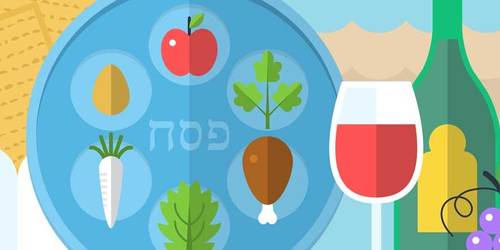Holidays
Holidays
In the Fall
Selichot takes place on a Saturday night before Rosh Hashanah. At Temple Sinai, we begin the process of repentance and renewal with a late night service by changing over our Torah covers to white and hearing a midnight blast of the shofar.
Rosh Hashanah is the Jewish New Year and falls on the first and second days of the Jewish month of Tishri (September/October). On this day, we hear the sound of the shofar, representing the combined prayers of the Jewish people. Yom Kippur is the Jewish festival of the Day of Atonement. Yom Kippur itself begins around sunset on that day and continues into the next day until nightfall. On this day, we fast and engage in a process of personal judgment, leading to renewal.
Click Here For Readings and Audio
Sukkot is a week-long holiday after Rosh Hashanah and Yom Kippur that traditionally celebrates the fall harvest in the Land of Israel. We build a sukkah or a symbolic hut, recalling the dwellings of the ancient Israelites, and we wave the lulav and etrog, a bundle of plants that grow by the water for a good rainy season. At Temple Sinai, our Brotherhood builds our community sukkah, our students decorate it, and we have a camp-out and service on the Temple lawn so we can all “dwell in tents.”
 Simchat Torah concludes Sukkot as we link the cycle of the seasons with the year-long cycle of reading the Torah. We end the last verses of Deuteronomy and immediately being the first verses of Genesis. Our custom at Temple Sinai is to bless students entering our Religious School. We also have our eldest Torah reader chant the end of the Torah and one of our youngest and newest Torah readers chant the beginning.
Simchat Torah concludes Sukkot as we link the cycle of the seasons with the year-long cycle of reading the Torah. We end the last verses of Deuteronomy and immediately being the first verses of Genesis. Our custom at Temple Sinai is to bless students entering our Religious School. We also have our eldest Torah reader chant the end of the Torah and one of our youngest and newest Torah readers chant the beginning.
In the Winter
 Hanukkah is the Festival of Lights remembering the spirit of the Maccabees and how they fought to keep their Jewish identity alive. We light the menorah to symbolize the persistence of the spirit during the darkest and coldest time of the year. At Temple Sinai, we share in an international latke bar dinner and light our menorahs together on the bimah of the synagogue.
Hanukkah is the Festival of Lights remembering the spirit of the Maccabees and how they fought to keep their Jewish identity alive. We light the menorah to symbolize the persistence of the spirit during the darkest and coldest time of the year. At Temple Sinai, we share in an international latke bar dinner and light our menorahs together on the bimah of the synagogue.
Purim retells the story of the book of Esther. We chant the megillah or scroll together, dress up in costume, send gifts of food to friends, give charity, and share in a fun carnival hosted by TASTY, our youth group.
In the Spring
 Pesach or Passover is a springtime holiday commemorating the Exodus from Egypt. At Temple Sinai, we have a community seder or ritual meal open to all celebrating our freedom. We clean out all leaven and eat symbolic foods, including matzah, bitter herbs, and charoset.
Pesach or Passover is a springtime holiday commemorating the Exodus from Egypt. At Temple Sinai, we have a community seder or ritual meal open to all celebrating our freedom. We clean out all leaven and eat symbolic foods, including matzah, bitter herbs, and charoset.
Yom HaShoah, Yom HaZikaron & Yom Ha’atzma’ut are modern holidays. Yom HaShoah is a remembrance of the Holocaust. Yom HaZikaron is Israeli Memorial Day, immediately followed by Yom Ha’atzma’ut, or Independence Day for the State of Israel.
Shavuot takes place after Passover and continues the story as the Israelites arrive at Mount Sinai. Together, we witness the chanting of the Ten Commandments. Our 10th grade or Confirmation students lead this service.
In the Summer
Tisha B’Av or the 9th of the Hebrew month of Av recalls the destruction of the First and Second Temples in Jerusalem as well as other difficulties of Jewish history. At Temple Sinai, we chant from Lamentations and read poetry, reflecting on our role as a people with a destiny unique among the nations.
Sun, November 2 2025
11 Cheshvan 5786
Quick Links
Temple Sinai of Sharon
25 Canton Street
Sharon MA 02067
p: (781) 784-6081
e: info@temple-sinai.com
Privacy Settings | Privacy Policy | Member Terms
©2025 All rights reserved. Find out more about ShulCloud







